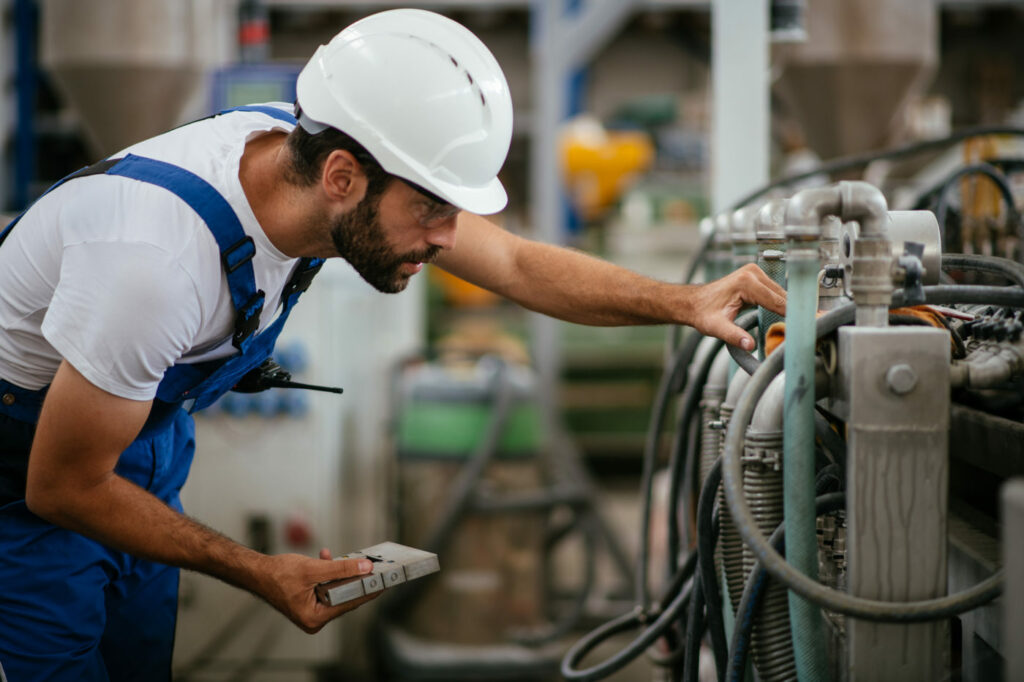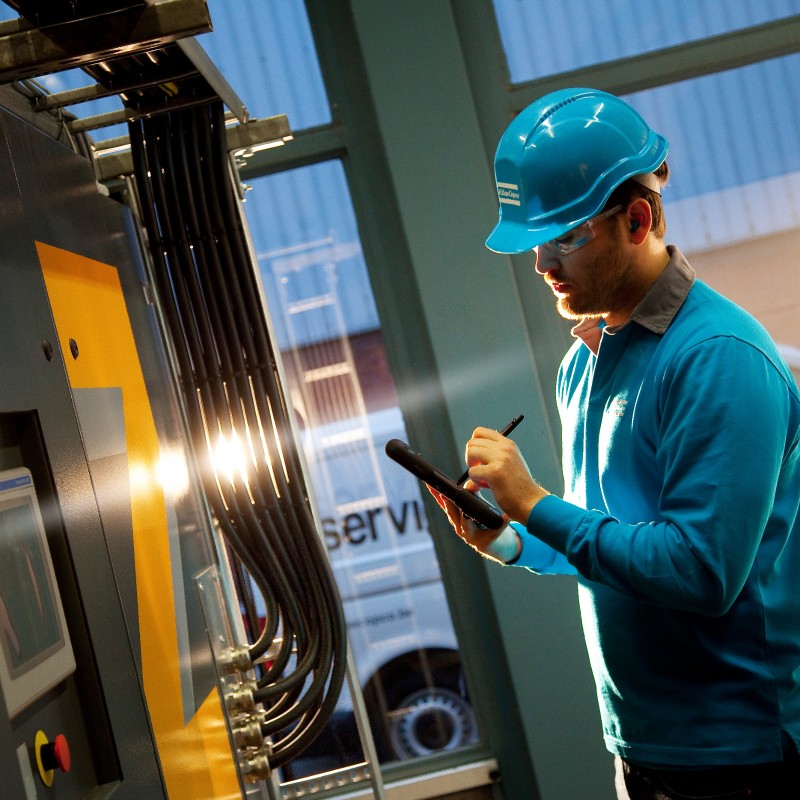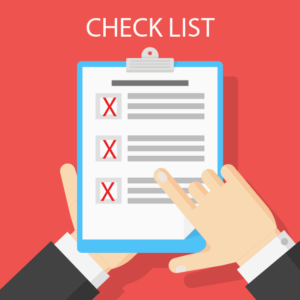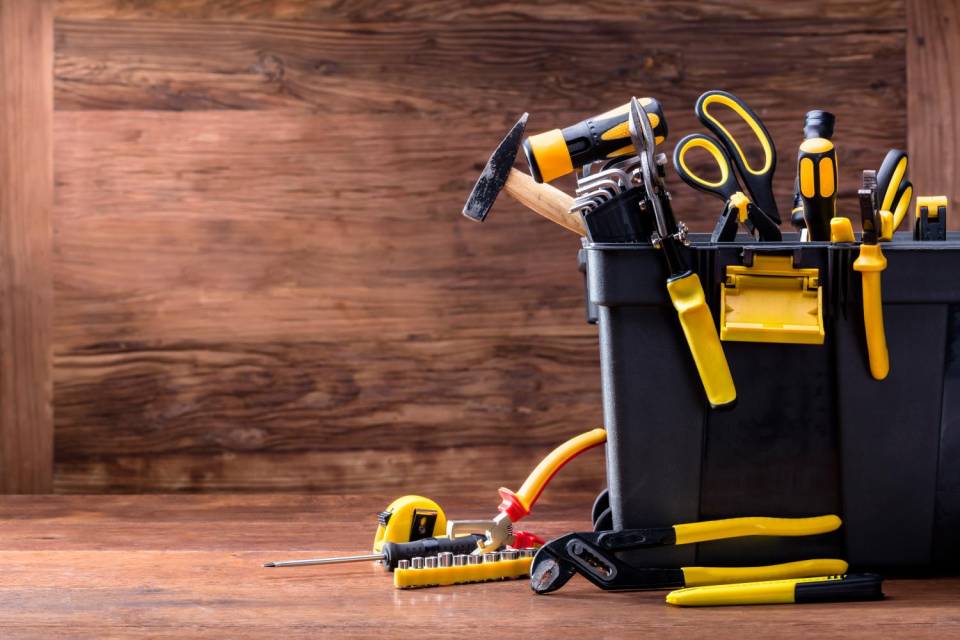Enacting a preventive maintenance checklist can yield great benefits: improved equipment operation, increased part quality and lower overall downtime to name a few. However, realizing these benefits does require an investment of time and effort to create and implement the plan.
If you’re a facility manager, you’ve probably heard some variation of the phrase “If it’s not broken, don’t fix it.” This mentality may work in the short term, but constant reactive maintenance can actually waste thousands of dollars each year due to lack of consistent, proactive repairs. Unplanned asset failure is stressful and time-consuming for a facilities team to fix.
Your preventive maintenance plan should be tailored to your facility, but there are many foundational elements common across the board. The easiest way to carry out these steps is often in the form of a checklist.
The benefits these checklists provide are:
- Better productivity
- Bigger profits
- Workflow standardization
- Cost-effectiveness
- Greater safety
- Faster troubleshooting
- Efficient maintenance planning
What Is a Preventive Maintenance Checklist?
A preventive maintenance checklist is an itemized list of written tasks that guide technicians through a process of asset’s preventive maintenance (PM).
This checklist’s objective is to establish reliable working processes within a facility, factory or other enterprises by ensuring that all technicians in the maintenance team follow the PM procedure to the letter.
Equipment manufacturers, consultants or other relevant parties prepare the preventative maintenance checklist that are the basic building block of any maintenance program.
There are four types of maintenance programs:
- Corrective
- Preventive
- Risk-based
- Condition-based
Preventive maintenance happens at predetermined intervals or according to prescribed criteria and aims to reduce the equipment’s performance degradation or failure.
The goal of PM is to improve operations efficiency by prolonging the equipment lifespan.
Preventive maintenance checklists, which either exist as step-by-step checklists or pass-or-fail checklists, can be organized according to:
- Equipment assets
- Types of system
- Season, for seasonal maintenance checks
- Daily, weekly, monthly, quarterly and yearly interval
- Level of priority
- Skill level
- Responsibility
Finally, PM checklists usually exist in two main forms:
- Time-based maintenance checklists that include routine maintenance tasks
- Condition-based maintenance checklists that are more difficult to prepare than time-based because they consist of non-routine maintenance tasks
6 Things To Do Before Executing Preventive Maintenance Plan
In order to build a very effective checklist that fits their enterprise, businesses should first:
- Delegate maintenance duties to relevant people
- Set preventive maintenance program goals
- Gather information about existing equipment
- Shortlist equipment before including in the checklist
- Adjust key performance indicators for each checklist
Prior to coming up with the preventative e-Form and its items that will depend on the type of asset you’re evaluating, it’s advisable to follow these 6 steps that will inform the checklist you’re building with greater accuracy.
- Delegate preventive maintenance duties to the relevant team of people: Before creating the actual preventive maintenance checklist, it is hugely important to decide on the people who will be part of the maintenance team and who will use the checklist. Selecting top management individuals, maintenance technicians and managers, as well as any staff that understands the technical side of the equipment and how it operates, ensures the maintenance program runs effectively.
- Set goals for the preventive maintenance program: According to the resources, structure, industry, size and other unique factors of your company, create a scope of a PM plan that can include fixing certain assets, replacing them or making a general long-term strategy for the equipment.
- Gather in-depth details about the existing equipment: The very foundation of any preventive maintenance checklist is being familiar with the existing equipment that will be included in the checklist. Document the model and a serial number of every piece of equipment and its installation, repairs and parts replacement guidelines. A technician should also assess the functioning of specific assets. With this information, you can calculate the cost of equipment downtime and acquire a basis for evaluating the PM program.
- Shortlist equipment before including it in the checklist: After making a full list of inventory, a decisionmaker should establish which equipment items should undergo a maintenance program. Assets that should have priority in this regard are those with high repair/maintenance costs, that need routine maintenance and those that are decisive for successful business operations.
- Come up with a PM schedule that informs future checklists: Based on equipment maintenance history, maintenance standards, inspection times, equipment location, production downtime and technician availability, create a preventive maintenance schedule that will provide minimal disruption and optimal maintenance.
- Adjust KPIs: To inform the items contained in the preventive maintenance checklist, evaluate cost/benefit effects of previous preventive maintenance programs. Maintenance managers may opt for adjusting PMs and key performance indicators depending on company activities, conditions and other factors.
The Preventive Maintenance Pre-Check
Before you begin, take a look at this pre-checklist that contains some basic information that should be core to any preventive maintenance plan:
- Assess the current state of your facility: Set benchmarks based on current performance for efficiency, quality, uptime, maintenance and more — and be sure you understand every aspect of your facility that will undergo preventive maintenance.
- Locate documentation: For machinery, much preventive maintenance can be done in accordance with manufacturer recommendations and specs.
- Create documentation of your own: A facilities preventive maintenance checklist is a good start and quick reference, but be sure to comprehensively document your preventive maintenance plan and processes in a place where all employees can easily access and review it.
Read More on Linquip
- All You Need to Know about Final Value Theorem
- How to read and use a micrometer
- An Easy Guideline to How to Use a Refractometer
- How to Use and Read a Hydrometer: Your Concise But Complete Guide
With these initial steps completed, you’re ready to start building a preventive 7 elements of an effective preventive maintenance checklist
Not all PM checklists are created equal. Poorly constructed guidelines can be as problematic as having none at all. The good news is, you are likely halfway there when it comes to building great checklists. Your maintenance team has all the necessary information—the key is to gather that information and organize it into formal processes. There are seven things to keep in mind when you’re going through this process:
Focus on safety– PM checklists should start and end with safety instructions, like required PPE, lock-out tag-out instructions, and steps to sanitize the area.
Ensure it is sequential– PM checklists should outline tasks in the order they should be completed.
Follow the preventive maintenance framework– A PM checklist should follow this order of tasks when appropriate:
Include necessary detail– PM checklists should provide enough detail that new technicians can realistically complete the task by reading the checklist. Having too much detail can be confusing and difficult to change if needed.
Provide photos and/or diagrams– PM checklists should include visual representations of the instructions to make the task easier and clarify any ambiguity.
Be as concise as possible– Every task on a PM checklist should have a clear action and goal associated with it so you can ensure maximum efficiency.
Insert total time for the checklist or time requirements for each task– Make sure to give sufficient time for tasks so technicians don’t feel rushed.
Maintenance checklist. Feel free to use the checklist guide below as a starting point:
The Ultimate Preventive Maintenance Checklist
Preventive Maintenance for Machines
- Ensure that machinery is clear of debris, before and after every shift.
- Wipe machine surfaces of lubricant, dirt and other loose debris each day.
- Regularly inspect tools for sharpness.
- Check for and replace worn or damaged tools.
- Routinely check all machinery fluid levels and air filters and replace as needed.
- Calibrate machines regularly.
- Make sure that machine is clear of debris before and after the shift begins
- Clean the lubricant, dirt and other debris from the machine’s surface
- Inspect tools’ sharpness
- Replace worn or damaged tools
- Check machine’s fluid levels and replace filters if necessary
- Calibrate machines
Heating, ventilation and air conditioning system maintenance checklist:
- Check the thermostat
- Inspect condenser coil and establish if it needs cleaning
- Check all wiring and electrical controls connections
- Inspect voltage and amperage on all motors
- Inspect the compressor contactor
- Check start capacitor and potential relay.
- Check the pressure switch cut-out setting.
- Replace air filter or clean reusable type filter.
Preventive Maintenance for Material Handling Equipment
- Regularly check belts for damage.
- Review calibration and programming for gantry machines. This is often a good opportunity to identify inefficiencies.
- Clean belts and other equipment in direct contact with materials and inventory at least once a day.
- Check and maintain motors and other power sources at least twice a year.
Preventive Maintenance for Facility Infrastructure
- Ensure that adequate space exists between machinery.
- Confirm that safety and caution areas are sufficiently marked.
- Keep walkways and other means of ingress and egress clear of debris and any other material.
- Guarantee that wires are properly secured and do not present a hazard.
- Check stairway and walkway railings regularly.
- Inspect structural building elements at least once a year — structural damage can further harm your capital investments and your inventory, creating exponential losses.
- Comprehensively check and repair building systems (electrical, plumbing, network) at least once a year.
- Examine fire detectors twice a year and remain in compliance with local regulations.
- Assess external grounds, including parking facilities, for hazards.
- Check your roof at least once a year.
- Make sure that safety and caution areas are sufficiently marked
- Ensure that wires are secured and are not a hazard
- Inspect walkway and stairway railways
- Ensure adequate space between machinery
- Inspect structural elements once a year at least
- Check building systems such as electrical, plumbing, network etc.
- Assess external grounds for hazards
- Examine fire detectors several times a year.
- Lightning maintenance checklist:
- Inspect all the lighting in the facility
- Check all exit, interior and exterior lighting for proper installation and function
- Replace nonfunctional lights
- Check the color temperature of lamps that you’re replacing
- Clean dirty lamps and check their aim
- Check hardware and cabling
- Plumbing maintenance checklist:
- Inspect plumbing according to schedule
- Investigate any leaks or noises
- Lubricate bearings in domestic water booster and circulation pump system
- Inspect couplings
- Check the sewage ejection pumps
- Lubricate exposed pumps
Preventive Maintenance for Network and Data Systems
Note: As connected systems become increasingly common, good “data hygiene” is just as important for industrial facilities as it is for any other organization.
- Review your network security practices.
- Regularly review and identify the most immediate threats to your network security (i.e. have there been data breaches in the news recently?).
- Assure that employees comply with safe practices such as password security and good email practices (avoiding phishing schemes etc.).
- Change Wi-Fi and other network passwords at least twice a year.
- Elements Of High-Quality Preventive Maintenance Checklist
- Preparation details: This includes estimated time for work completion, necessary spare parts for completing the work, primary tools needed to complete the work etc.
- Safety details: Envelopes required personal protective equipment, safety instructions and LockOut TagOut (LOTO) instructions
- Visual aids such as diagrams, videos, pictures, graphs, charts, tables and more.
- How To Outline The Steps For Following A High-Quality PM Checklist
The three important characteristics of a good PM checklist include:
-
- Communicating future steps in a concise and clear manner: The PM checklist should be simple enough for technicians to follow without or with very little supervision. Some tips for making checklists understandable are:
- Break long paragraphs into multiple steps
- Use a diagram or a picture for items that need detailed explanations
- Be precise when describing steps that technicians need to take. For instance, if the asset has 3 coils, saying “check the coil” isn’t clear enough.
- Communicating future steps in a concise and clear manner: The PM checklist should be simple enough for technicians to follow without or with very little supervision. Some tips for making checklists understandable are:
- Laying out said steps in sequence: Preventive maintenance is a very step-by-step procedure. The checklist should align with this: they should have a list of actions that technicians should follow in a very specific order of completion.
- Updating the information on a regular basis: Preventive maintenance checklist should get frequent and regular updates because
-
- Technicians that use it can suggest changes to it that could improve the process
- The breakdown of an asset may cause a problem that wasn’t fixed
- The asset may now be operating under different conditions than before
- The company purchased a new asset or a piece of equipment and needs to match it with those on the existing checklist.
-






